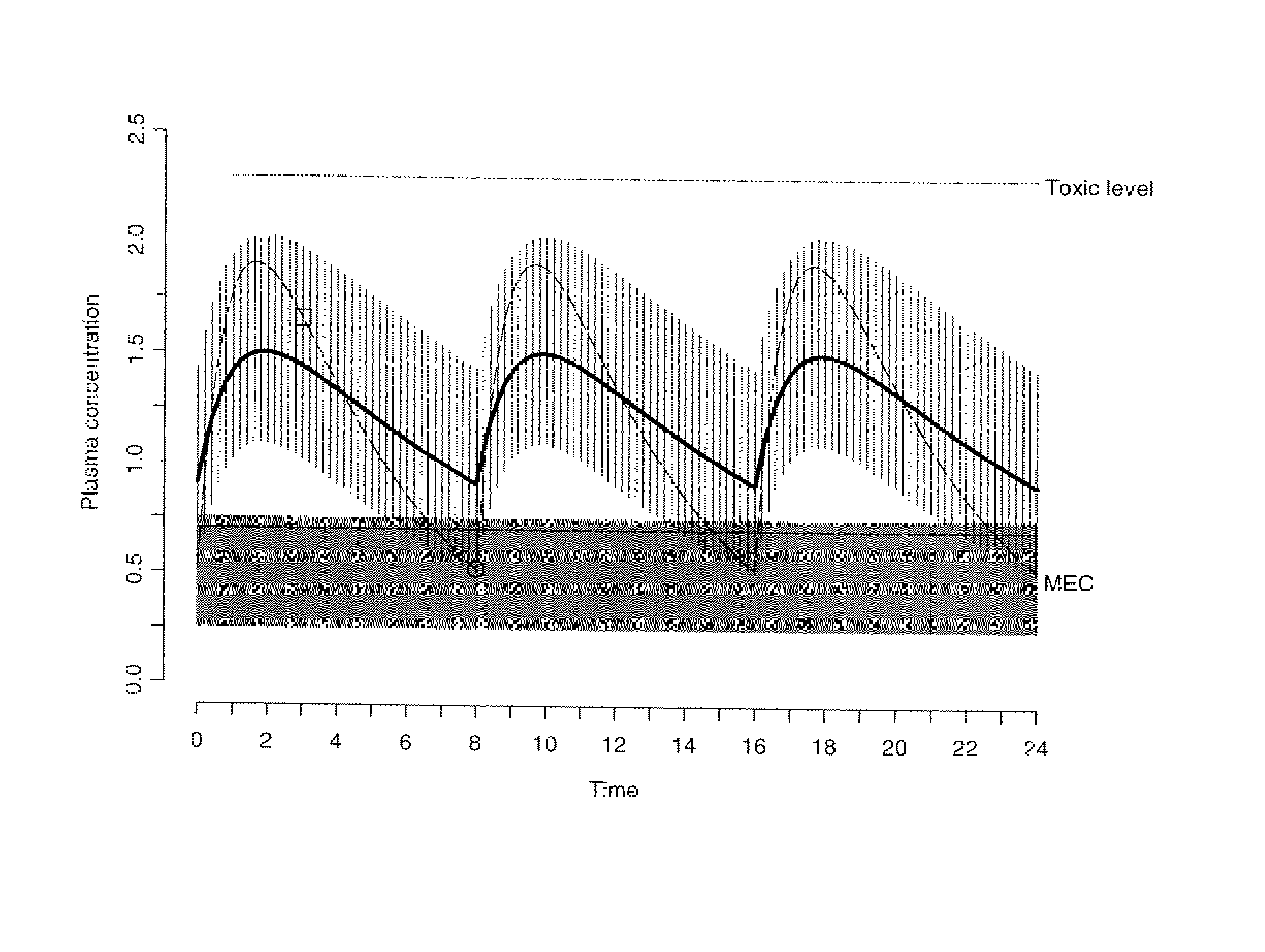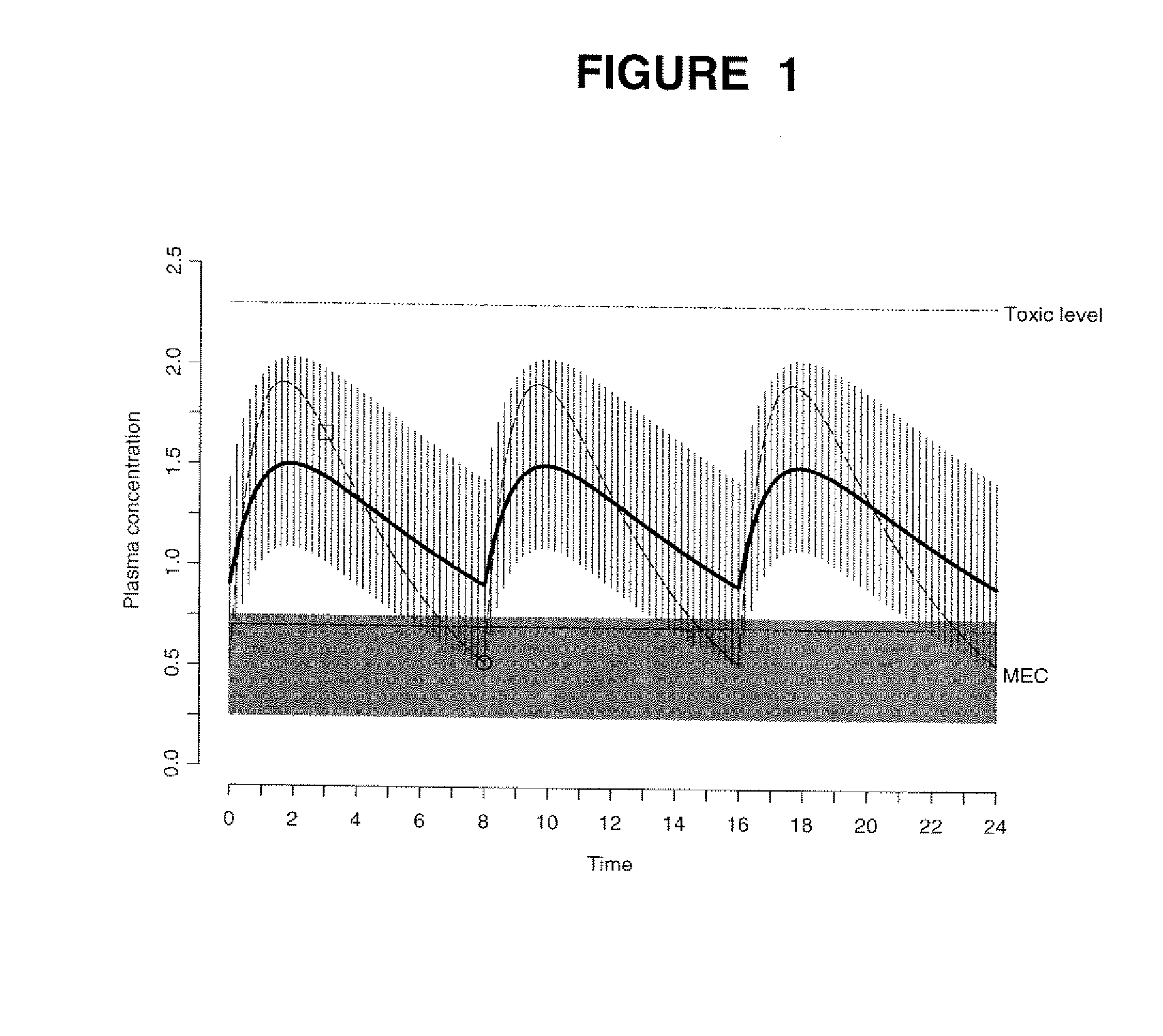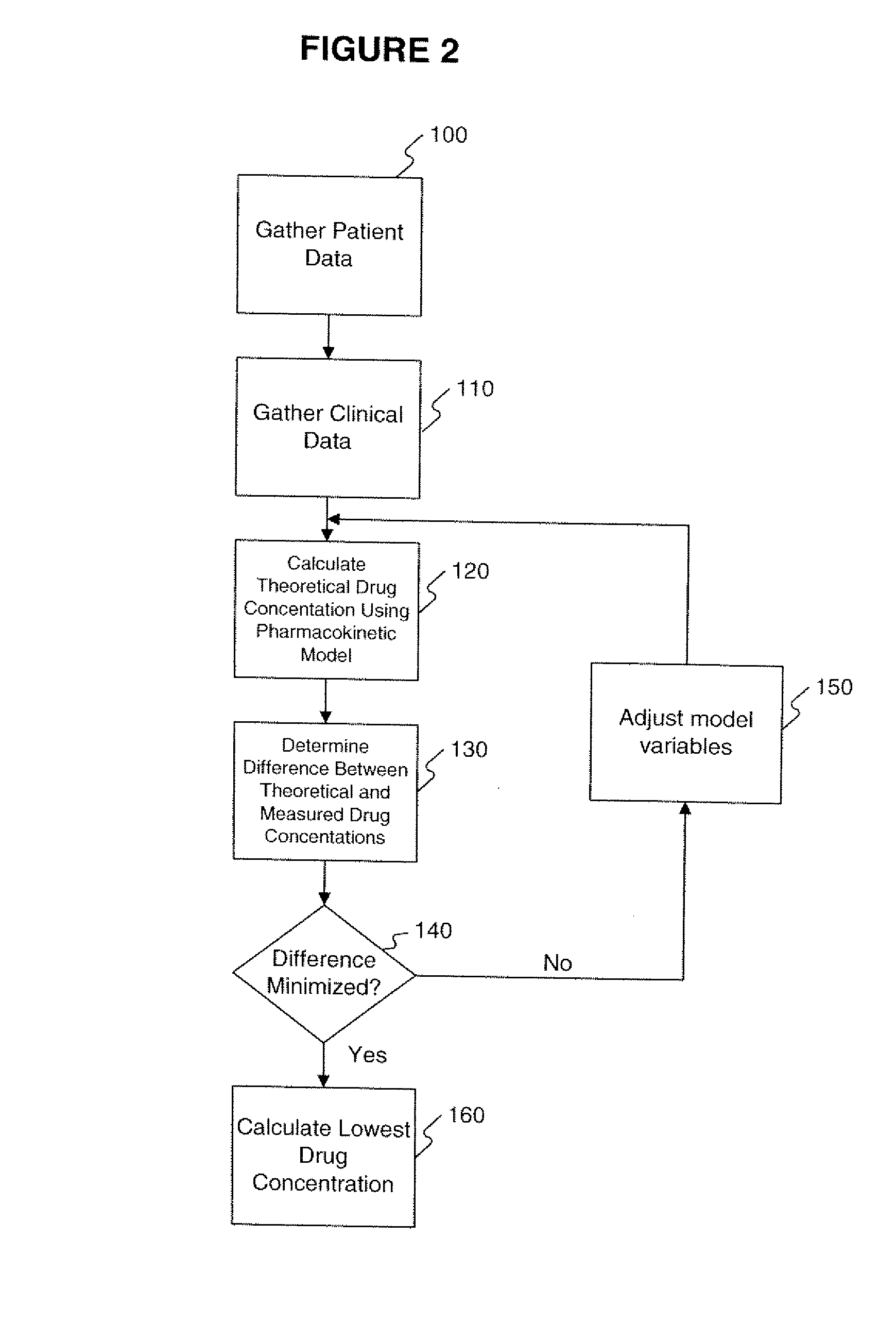System and method for optimizing drug therapy for the treatment of diseases
a drug therapy and disease technology, applied in the field of disease management, drug therapy, disease monitoring and pharmacogenomics, can solve the problems of reducing efficacy, affecting patients, and bacillus, and reducing the treatment effect of many patients, and reducing the treatment
- Summary
- Abstract
- Description
- Claims
- Application Information
AI Technical Summary
Benefits of technology
Problems solved by technology
Method used
Image
Examples
example 1
Development of a Population Based Pharmacokinetic Method
General Outline of an Example Methodology
[0114] The data obtained from the quantitative analytical method, i.e., the actual drug circulatory concentration levels, were inputted into a mathematical model. This model was then used to predict the concentration of the drug in the circulation. This prediction, using the model, took into account the dosage, the time between intake and sampling, and other assumptions of the model, i.e., one compartment. Variables were introduced and / or adjusted to close the gap found between the predicted value and the value found through the quantitative analytical model. Validation of the model occurs by approximating these variables as closely as possible.
[0115] A classical population pharmacokinetic model may be used to predict an individual plasma concentration of a drug using a set of mathematical equations. One embodiment of the present invention utilized a one-compartment model with absorp...
example 2
Calculation of Inhibitory Quotient
[0123] Two studies demonstrate the use of the IQ or the NIQ for the protease inhibitors lopinavir and indinavir, respectively. In one study in 56 multiple PI-experienced, NNRTI-naïve patients treated with lopinavir plus efavirenz and 2 NRTIs, a correlation was found between the lopinavir IQ and the % of patients with viral load below 400 copies / mL at week 24. The % of patients with viral load below 400 copies / mL at week 24 was 70, 80, and 100% if the lopinavir IQ was 15, respectively. When using the lopinavir trough concentration alone, no correlation with virologic outcome was found.
[0124] In another study, a VIQ for indinavir >2 was the strongest predictor of virologic response over 48 weeks in patients who failed an indinavir-containing regimen.10. In this study, patients failing HAART (indinavir 800 mg tid plus 2 NRTIs) were switched to a ritonavir / indinavir 400 / 400 mg bid regimen, with continuation of the NRTIs during the first 3 weeks. There...
example 3
Normalized IQ
[0125] This example demonstrates how the normalized IQ may provide information regarding efficacy of a therapeutic agent. The first 2 columns of Table 2 represent the trough concentration and fold change of the virus for saquinavir. The next 2 columns represent what a pharmacokinetic model or resistance testing would advise based on these tests alone. The last 4 columns represent what a normalized IQ would advise based on 4 different scenarios for calculating normalized IQ: [0126] Method 1: threshold trough / mean fold change wild-type [0127] Method 2: threshold trough / cut-off fold change [0128] Method 3: mean trough in population / mean fold change wild-type
[0129] Method 4: mean trough in population / cut-off fold change
TABLE 2Trough inFoldPharmVirologicng / mLchangeModeladviceMethod 1Method 2Method 3Method 45002.0MaintainSensitive125%313%50%125%2001.0MaintainSensitive100%250%40%100%5005.0MaintainResistant 50%125%20% 50%10005.0MaintainResistant100%250%40%100%1000.5Increase...
PUM
| Property | Measurement | Unit |
|---|---|---|
| resistance | aaaaa | aaaaa |
| concentration | aaaaa | aaaaa |
| residual error | aaaaa | aaaaa |
Abstract
Description
Claims
Application Information
 Login to View More
Login to View More - R&D
- Intellectual Property
- Life Sciences
- Materials
- Tech Scout
- Unparalleled Data Quality
- Higher Quality Content
- 60% Fewer Hallucinations
Browse by: Latest US Patents, China's latest patents, Technical Efficacy Thesaurus, Application Domain, Technology Topic, Popular Technical Reports.
© 2025 PatSnap. All rights reserved.Legal|Privacy policy|Modern Slavery Act Transparency Statement|Sitemap|About US| Contact US: help@patsnap.com



